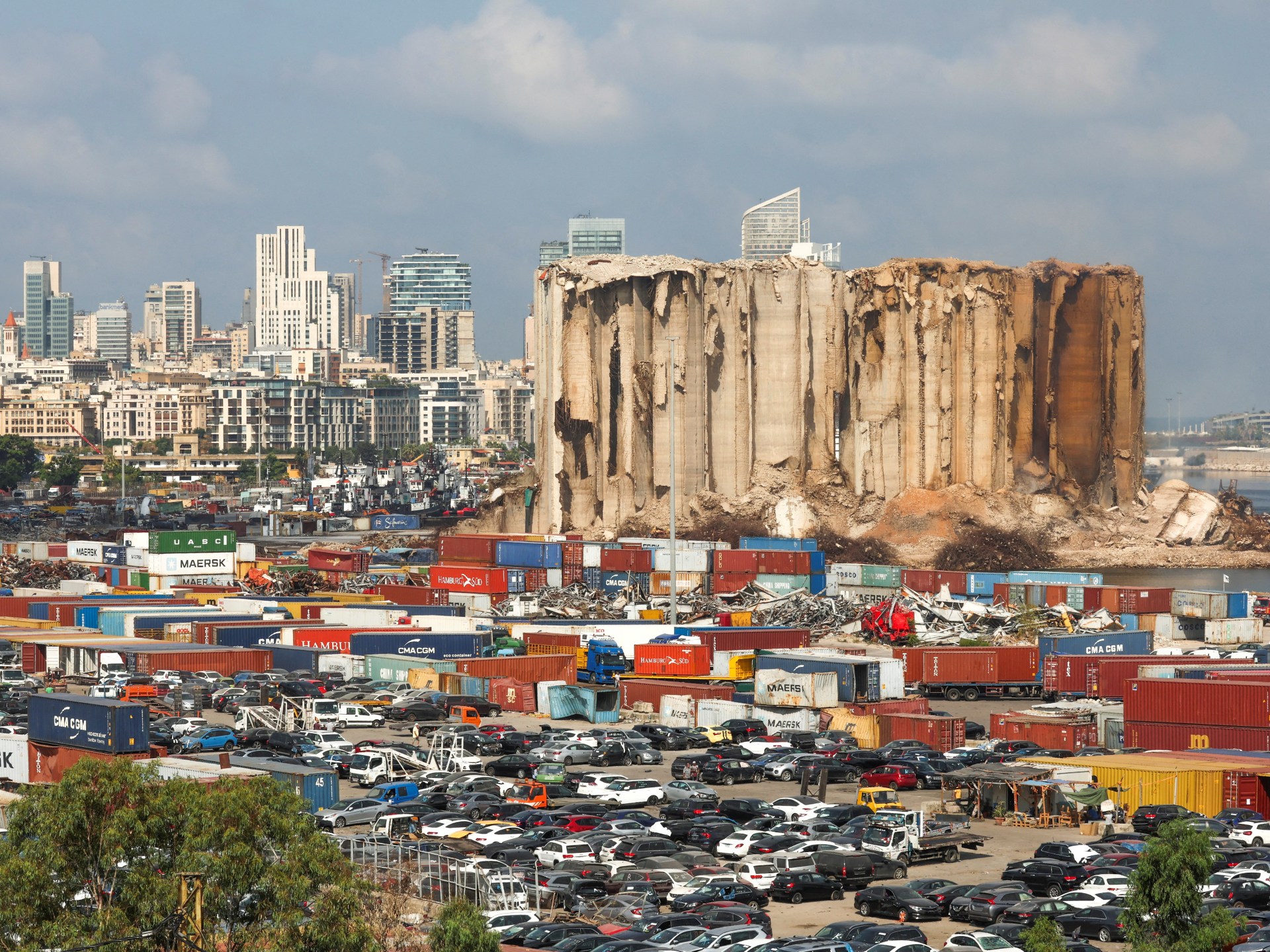New Beirut port silo collapse brings back blast trauma | News
Clouds of dust rise over the port after the collapse, which brought down the last of the northern block of silos.
The northern section of the grain silos damaged two years ago by a deadly blast at the Beirut port has collapsed after warnings the structure was leaning too far to stay up.
A cloud of dust rose over the port early on Tuesday after the collapse, which brought down eight more silos that were more heavily damaged in the blast and where a fire has been burning since July.
The remaining southern block is more stable and not at imminent risk of collapse, said French civil engineer Emmanuel Durand, who has installed sensors on the silos.
The 50-year-old, 48-metre-tall (157-foot) silos absorbed much of the impact when tonnes of incorrectly stored ammonium nitrate fertiliser went up in a massive explosion on August 4, 2020. The silos effectively shielded the western part of Beirut from the blast, which killed more than 200 people.
Part of the silos collapsed on July 31 and another section fell on August 4, the second anniversary of the blast.
#lebanon #beirut port silos northen block collapsed this norning pic.twitter.com/WJjyovigzQ
— Hassan Ammar (@HassanAmmar5) August 23, 2022
A fire has been burning in the silos for more than a month as remaining grain stocks ferment in the summer heat.
On Sunday, the health ministry said samples from around the port showed that the air contained high amounts of common mould, which would not be dangerous unless inhaled in large quantities over a long period of time.
In April, the government ordered the silos’ demolition but the operation was put on hold, partly because of objections from relatives of blast victims who want them preserved as a memorial.
They also contend that the silos may contain evidence useful for the judicial probe into the blast.
Survivors of the blast and residents near the port said watching the fire from their homes and offices was like reliving their trauma from the blast.
Public works minister Ali Hamieh announced last week that the government had agreed to reserve 25,000 square metres (270,000 square feet) of the port to build new grain silos.
This is larger than the current complex, which occupies a space of 21,000 square metres (226,000 square feet).
Hamieh said funding would come from international donors as well as the government, which has been bankrupted by a crushing financial crisis.




